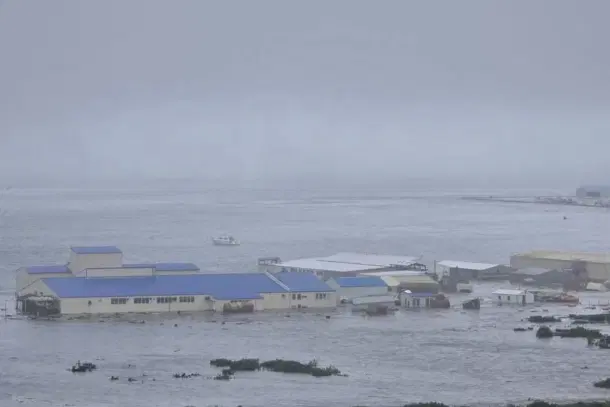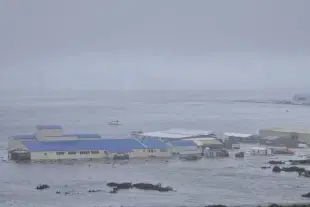News Brief
Massive 8.8 Earthquake Hits Russia’s Pacific Coast: Strongest In 14 Years, Tsunami Alerts For Japan, Hawaii And Alaska
Swarajya Staff
Jul 30, 2025, 08:59 AM | Updated 08:59 AM IST
Save & read from anywhere!
Bookmark stories for easy access on any device or the Swarajya app.


An 8.8-magnitude powerful earthquake struck Russia’s Far East on Wednesday (30 July), triggering a Pacific-wide tsunami alert extending from Alaska to New Zealand, NDTV reported.
In Japan's Honolulu, tsunami sirens sounded on Wednesday, prompting residents to seek higher ground for safety.
Japan’s Meteorological Agency reported a 40-centimeter tsunami reaching Tokachi, on southern Hokkaido’s coast.
Regions closest to the epicentre on Russia’s Kamchatka Peninsula saw damage and evacuations but reported no severe injuries.
Severo-Kurilsk on Russia’s Kuril Islands received the first tsunami wave, Governor Valery Limarenko confirmed. He said all residents remained safe and sheltered on higher ground.
The Pacific Tsunami Warning Centre confirmed tsunami formation, warning of potential coastal damage in Hawaii.
"Urgent action should be taken to protect lives and property," the warning stated.
Oregon authorities predicted 1–3 foot tsunami waves from 11.40 pm local time, Tuesday and advised avoiding beaches, harbors, and marinas until conditions stabilise.
"This is not a major tsunami, but dangerous currents and strong waves may pose a risk to those near the water," the department said.
Tsunami advisories were issued across Oregon, California, Washington, and Canada’s British Columbia.
Initially recorded at magnitude 8.0, the quake was later revised to 8.8 by the US Geological Survey, which placed its depth at 20.7 km.
The quake was centred about 119 kilometers east-southeast from the Russian city of Petropavlovsk-Kamchatsky, which has a population of 180,000, on the Kamchatka Peninsula. Several strong aftershocks, reaching up to magnitude 6.9, followed.
Petropavlovsk-Kamchatsky reported swaying vehicles, building damage, power cuts, and mobile service failures. Several people in the city sought medical attention, though no serious injuries occurred.
This earthquake ranks among the world’s strongest since Japan’s 2011 9.0-magnitude disaster, which triggered a deadly tsunami and nuclear crisis.
Japan’s Pacific-side nuclear plants reported no issues after the quake. At Fukushima Daiichi, 4,000 workers relocated to higher ground while overseeing safety systems remotely.
In the Philippines, warnings were issued for Pacific-facing areas with wave estimates under 1 meter. Officials advised coastal evacuation, warning of prolonged and dangerous conditions.
New Zealand officials warned of erratic currents and urged the public to avoid beaches, harbors, and estuaries until conditions returned to normal.
Despite being 9,600 kilometers from the quake’s epicentre, New Zealand issued safety alerts due to widespread tsunami effects.
The Kamchatka Peninsula hasn’t experienced such a powerful quake since 1952, local geophysical experts stated.
Authorities said the situation remains “under control” but warned of possible aftershocks for up to a month and advised avoiding coastal zones.
In early July, five strong quakes, including a magnitude 7.4 tremor, occurred offshore near Kamchatka. The largest quake was at a depth of 20 kilometers and was 144 kilometers (89 miles) east of the city of Petropavlovsk-Kamchatsky.
Also Read: Powerful 7.4 Magnitude Earthquake Hits Taiwan, Strongest In Over Two Decades: Here's All About It





